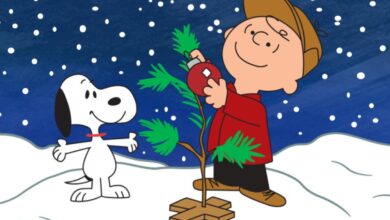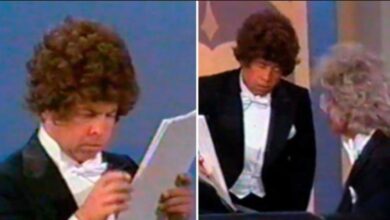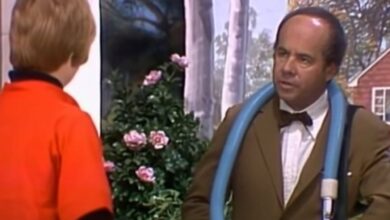Ray Price’s “For the Good Times” Brings Country Sophistication and Crossover Elegance in 1970
When Ray Price released “For the Good Times” in June 1970, it marked not only a turning point in his own storied career but also a quiet revolution in the sound of country music. Written by a then-unknown Kris Kristofferson, the song’s gentle rhythm and philosophical resignation stood in stark contrast to the twang-heavy heartbreak of the era. Blending lush orchestration with Price’s velvet baritone, the track climbed to No. 1 on the Billboard Hot Country Singles chart and broke into the Billboard Hot 100—an unusual feat that signaled a new era of crossover potential for country ballads.
Ray Price was already a legend by the time he recorded “For the Good Times.” Born in Texas in 1926, Price began his career in the honky-tonk scene of the 1950s, known for his hard-driving shuffle beats and richly masculine voice. He’d scored numerous hits with barroom laments like “Crazy Arms” and “Heartaches by the Number.” But by the late 1960s, Price—never one to stay still—was evolving. His desire to explore more refined, orchestrated arrangements set him apart from many of his peers and hinted at his readiness to transition country music into something more elegant and emotionally layered.
The song itself came from a surprising source. Kris Kristofferson, then still struggling to find his footing as a songwriter, had penned “For the Good Times” in a moment of reflection about a dying relationship. It wasn’t a typical break-up ballad; instead of anger or sorrow, the lyrics offered gratitude, tenderness, and a graceful farewell. Price reportedly heard the song on a demo tape and instantly knew it had potential. What drew him in wasn’t just the lyricism—it was the maturity of the message, the quiet emotional depth that resonated with an audience aging alongside him.
In the studio, Price partnered with renowned producer Don Law and arranger Cam Mullins to craft a sound that was as smooth as it was sorrowful. Gone were the twin fiddles and steel guitars of his earlier hits. In their place: sweeping strings, a restrained rhythm section, and piano flourishes that echoed the countrypolitan movement. Price’s vocal delivery was understated but profoundly moving, capturing the ache of farewell with a calm dignity. It wasn’t just country—it was cinematic, almost operatic in its emotional scope.
Upon release, the track was met with immediate acclaim. “For the Good Times” spent 19 weeks on the country charts, holding the top spot for a full six weeks. Its success extended beyond Nashville, reaching No. 11 on the pop charts and introducing Ray Price to a broader, more mainstream audience. The single would go on to sell over a million copies, earning Price a gold record and his place among the most sophisticated voices in the genre.
The song’s impact extended beyond numbers. “For the Good Times” marked a definitive break from the hard-edged honky-tonk roots of country and embraced a more polished, orchestral sound that would later be associated with artists like Glen Campbell and Kenny Rogers. It helped validate the notion that country music could be refined without losing its emotional core. More importantly, it offered a template for future country ballads that dealt with mature, nuanced themes—grief not as melodrama but as quiet understanding.
For Price, the song opened doors late in his career that few artists get to walk through. It revitalized his standing in Nashville and beyond, giving him the momentum to record a series of lush ballads that redefined his image. No longer just the honky-tonk man, he was now seen as a balladeer of the heart, capable of delivering songs with emotional gravity and sophistication. The track also earned him renewed television appearances, headline tours, and a Grammy Award for Best Male Country Vocal Performance.
Beyond Price’s personal resurgence, the song had a ripple effect across the industry. “For the Good Times” became a benchmark for songwriting and vocal interpretation, inspiring a wave of artists to cover Kristofferson’s compositions and elevate them with their own stylistic flair. The track’s fusion of country sensibility with pop production values would go on to influence artists in the 1980s and 1990s who sought to blend authenticity with accessibility.
Covers of the song have been plentiful and diverse. Elvis Presley, Al Green, Dean Martin, and even Perry Como brought their own sensibilities to the tune, each offering a different shade of melancholy. Al Green’s soulful rendition added gospel undertones, while Elvis leaned into its dramatic phrasing during his Vegas years. Yet none captured the song’s emotional stillness quite like Price’s original, which remains the definitive interpretation in the minds of many listeners.
The timing of the song’s release coincided with a period of social change in America. The calm grace of “For the Good Times” offered a counterpoint to the turbulence of the era. As the Vietnam War dragged on and societal norms shifted, listeners found comfort in a song that chose reflection over chaos, tenderness over bitterness. Price’s version, in its quiet strength, became a sort of emotional refuge.
Over five decades later, “For the Good Times” continues to endure. It’s a staple on country radio, appears frequently on “best of” lists, and is taught in songwriting courses as an example of lyrical restraint and emotional power. Its title alone has become shorthand for bittersweet farewells, used in everything from film scenes to farewell speeches. That kind of cultural integration speaks to the song’s timeless resonance.
Musically, the track helped set the stage for what would become the “countrypolitan” era of the 1970s. The orchestral elements that defined Price’s version showed that lush arrangements could enhance, rather than dilute, the soul of country music. It also elevated the status of Kristofferson, whose songwriting career exploded after Price’s success with this track, leading to other major cuts by artists like Janis Joplin, Johnny Cash, and Willie Nelson.
Ray Price passed away in 2013, but his legacy lives on in songs like this. “For the Good Times” remains one of his crowning achievements—a moment where artistry, timing, and emotion aligned to create something truly lasting. It is frequently cited in retrospectives as one of the greatest country ballads ever recorded and stands as a testament to Price’s willingness to evolve and elevate the genre he helped define.
In the end, what makes “For the Good Times” so powerful isn’t just its sound or its chart success. It’s the emotional truth it offers—a gentle reminder that even the end of something beautiful can be met with grace. Ray Price didn’t just sing a song—he delivered a farewell that felt like a warm embrace. And in doing so, he left behind a masterpiece that will echo through time, long after the last note fades.





